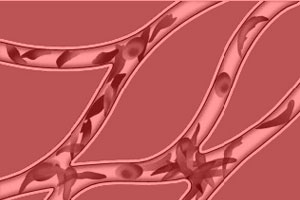Unfortunately, fixing a gene is not like falling off a log--it is really hard to do. The scientists in this study decided to try it with iPS cells. Basically they replaced the mouse's blood stem cells with newly repaired ones so that the new blood stem cells made healthy new red blood cells. The mouse has not shown signs of sickle cell anemia for 12 weeks so far.
I don't want you to come away thinking that it was an easy thing to do. It wasn't (see below). But it does show that it is possible to treat and possibly cure sickle cell anemia in mice using iPS cells.
To move it to humans, we need to make sure that the treatment sticks. When these kinds of things have been tried with gene therapy, the cure almost always wears off over time. It shouldn’t happen at the DNA level with the way they did their experiment, but we need to wait and see.
The scientists also need to find genes that can turn a skin cell into an iPS with less risk of causing cancer. And to find better ways to get these genes into the skin cell so that, again, the treatment doesn’t cause cancer.
Even taking all of this into account, this is a very promising first step. Curing a genetic disease with stem cells that do not get rejected by the recipient's body is one of the big goals of stem cell research. And these researchers may have accomplished this in mice.

More details on how to cure a mouse’s sickle cell anemia:
1. Add four genes to turn the skin cell into an iPS cell.
See the previous blogto see how to do this. To decrease the risk of the mouse developing cancer from these cells, the researchers chopped out one of the genes they used, the myc gene.
2. Use the ES cell to fix the gene using a process called homologous recombination.
Homologous recombination is a way to swap out one DNA for another. It is incredibly inefficient and we can really only get it to work at all in ES cells. Out of 72 cells, they managed to get one where one copy of the gene was repaired.* This result showed that homologous recombination would work in iPS cells which was an open question.
3. Turn the ES cell into a blood-like stem cell by adding the HoxB4 gene.
4.Destroy the mouse’s bone marrow and replace the cells with the new blood stem cells.
This is really just a bone marrow transplant using the newly created cells as the blood stem cells.
*In the end they had a mouse with one of its copies of the hemoglobin gene repaired in its blood cells. (All the rest of the cells including its sperm cells still carried the disease version of the hemoglobin gene.) The mouse exhibited no sickle cell anemia symptoms similar to most human carriers of the disease who have a single broken copy.
 Dr. Barry Starr is a Geneticist-in-Residence at The Tech Museum of Innovation in San Jose, CA.
Dr. Barry Starr is a Geneticist-in-Residence at The Tech Museum of Innovation in San Jose, CA.
latitude 37.3316, longitude -121.89
 Last blog I talked about how scientists turned skin cells into embryonic stem (ES) cells. This was big news because scientists can now make an ES-like cell without destroying an embryo.
Last blog I talked about how scientists turned skin cells into embryonic stem (ES) cells. This was big news because scientists can now make an ES-like cell without destroying an embryo.
